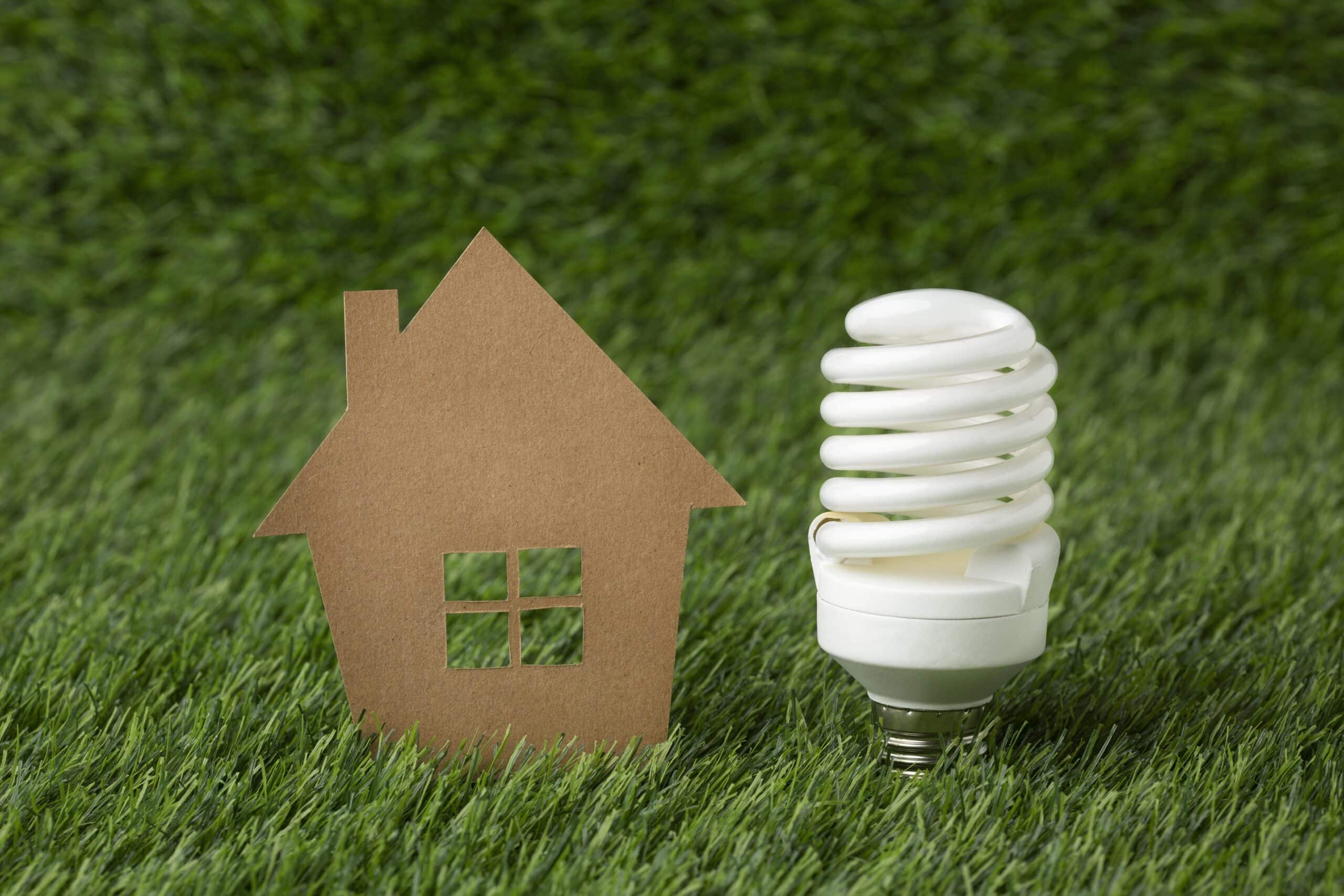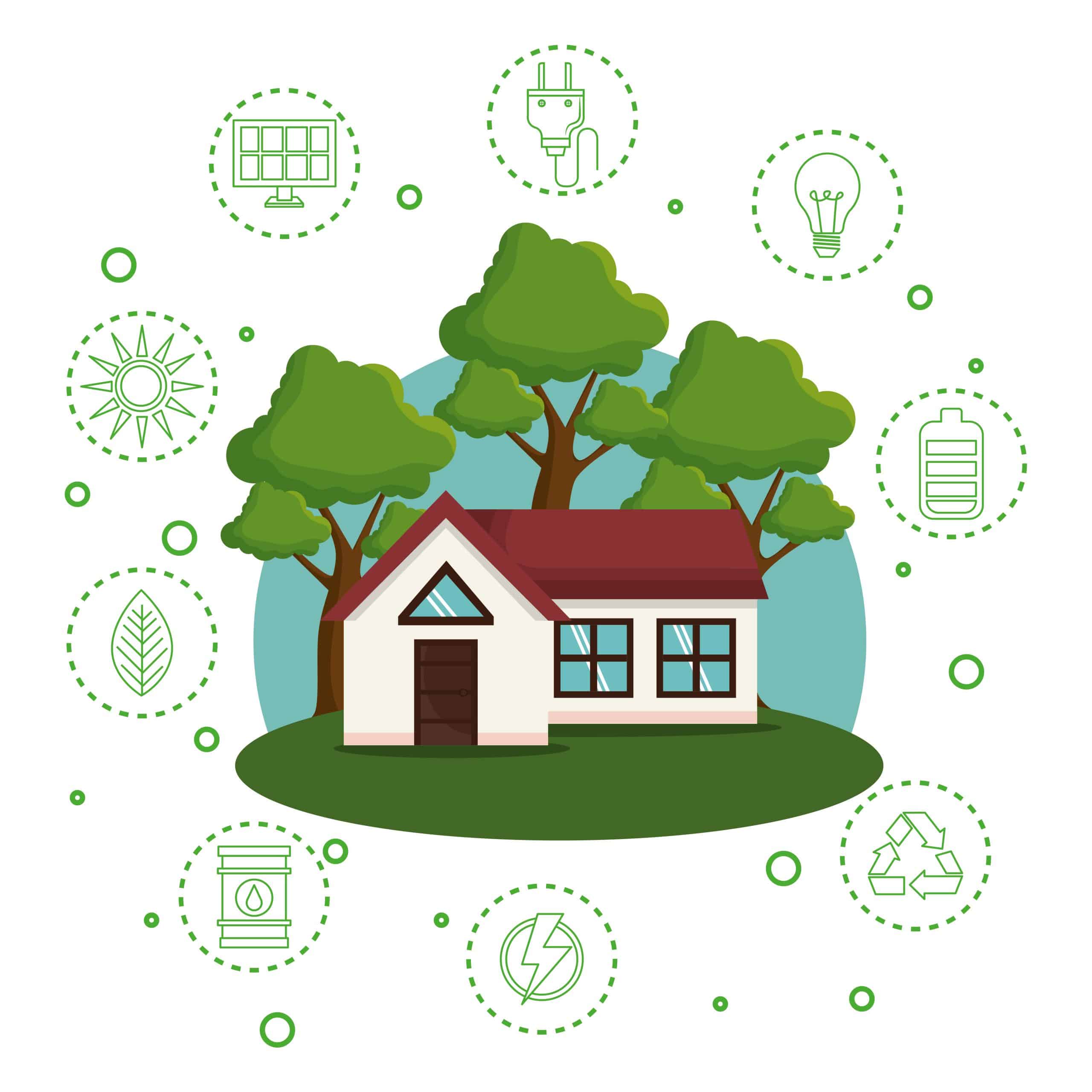The 12 variables that determine whether the home you’re planning to build or renovate is sustainable.
In this article we cover:
- Why building a sustainable home is important
- What is eco house building
- The 12 variables to factor into your project
- Ireland’s methodology to rate whether your home is sustainable or not
This summer stood out as one of the hottest on record, marked by devastating floods and raging wildfires across various regions of Europe. These alarming events have underscored, once again, the urgency for a transition to more sustainable homes.
While many associate sustainable buildings with energy efficiency, there’s much more you can do to make your home greener. So, what exactly is a green home, and why should you care as a self-builder?
Here are 12 of the key factors to consider in building a truly sustainable home.

Good energy rating
A green home focuses on energy efficiency, as reflected in its energy rating, which calculates energy use for heating, hot water, ventilation and water consumption.
A higher rating means lower energy consumption, reduced carbon emissions, and lower utility bills. It’s important to note that the calculation does not include average plug loads, so it’s essential you are mindful of energy usage from appliances too.


Low embodied carbon
Green homes consider the environmental impact of building materials. Embodied carbon refers to the carbon emissions associated with the extraction, transportation, manufacture, and installation of these materials.
Biobased products, such as timber, typically have a lower carbon footprint compared to other building materials. You should check they have sustainable forestry certification (FSC or PEFC). But using biobased is not the only option. You can check the embodied carbon of materials you are using through the construction materials pyramid or Environmental Product Declarations (EPD).
EPDs provide information on the environmental impacts of products including greenhouse gas emissions. You can learn more at materialepyramiden.dk and epdireland.org.
Remember, the greenest home is the one that already exists. According to recent research from University College Dublin, residential retrofit produces a quarter of the embodied carbon emission of a new building.

Acoustic comfort
A peaceful indoor environment enhances a sense of security, privacy, and overall comfort, leading to improved physical and mental health. Your green home should mitigate sound, which may require insulation, and acoustic tests should be performed.

Healthy and clean air inside
A green home prioritises good indoor air quality. You should incorporate proper ventilation systems to prevent bthe buildup of pollutants, dampness, and mould. According to the Asthma Society of Ireland, one in 13 people have asthma.
The significance of ventilation grows in tandem with the efficiency of your home. While overlooking ventilation might be permissible in a leaky dwelling, it becomes crucial for airtight homes.

Low Volatile Organic Compounds (VOCs)
Still on the topic of indoor air quality, VOCs can be emitted from building materials, furniture, and paints through a process called offgassing.
Green homes prioritise the use of low VOC emitting products, reducing the risk of respiratory illnesses, allergies, and long term health issues. You should look for products low in VOC which are certified by EU Ecolabel and other quality labels.

Safe from radon
Radon gas, a naturally occurring radioactive as, can infiltrate homes through tiny cracks or holes in floors and walls, posing a health risk.
According to the Environmental Protection Agency radon is the second largest cause of lung cancer in Ireland. Radon is only an issue in parts of the country; check the radon risk map and take measures to prevent radon leaks if needed.

Brightness
Considering that the World Health Organisation says we spend more than 90 per cent of our time indoors, it is important to have well lit homes. Your green home should maximise exposure to natural daylight, which not only improves mood and mental wellbeing but also helps regulate sleep patterns.


Sustainable location
A green home is located within a network of schools, shops, public transportation, and amenities. According to the Environmental Protection Agency, ROI’s highest and fastest growing source of carbon emissions is transportation.
A strategic location promotes sustainable transport options such as walking, cycling, or public transport. By reducing reliance on cars, your green home can enhance your quality of life and contribute to a healthier and more sustainable community.

Water saving
Green homes prioritise safe and efficient water use. Water saving devices should be installed to reduce water consumption. These devices provide a high coverage sensation while delivering less water per minute, resulting in significant water and energy savings. Products with the Unified Water Label disclose their energy usage via a user friendly energy efficiency chart like the one you find on electrical products and appliances.

Less waste
Green homes actively promote waste reduction, recovery, reuse, and recycling during and after construction. By implementing sustainable waste management practices, your green home can contribute to minimising significant waste production.
According to the Environmental Protection Agency, the construction industry is the largest waste stream generated in ROI. Circular economy resources are available from the EPA in ROI and the Department of Agriculture, Environment and Rural Affairs in NI.

Garden: Biodiversity friendly
Green homes consider the impact on natural habitats and strive to improve ecological value. By encouraging the flourishing of native plants and animals, your home can support healthy ecosystems.
Several studies have also shown that access to nature can improve people’s health and wellbeing. The All-Ireland Pollinator Plan (pollinators.ie) provides useful resources to take action, while Bird Watch Ireland offers nestbox designs for birds and wildlife.


Design: Lifetime adaptable homes
A green home is designed to accommodate substantial changes over time. Buildings inevitably face changes in their surroundings and the needs of the people using them change too. If your building can easily adapt, it will be used more effectively and for longer. A simple plan with wide structural spans and generous floor to ceiling heights might be a good solution for future adaptation
Home Performance Index
In ROI, a voluntary scheme for green homes is the Home Performance Index which guarantees adherence to these 12 points and beyond. The Home Performance Index (HPI) was developed by the Irish Green Building Council after extensive consultation with the industry. More than 20,000 homes are already registered to be certified.











